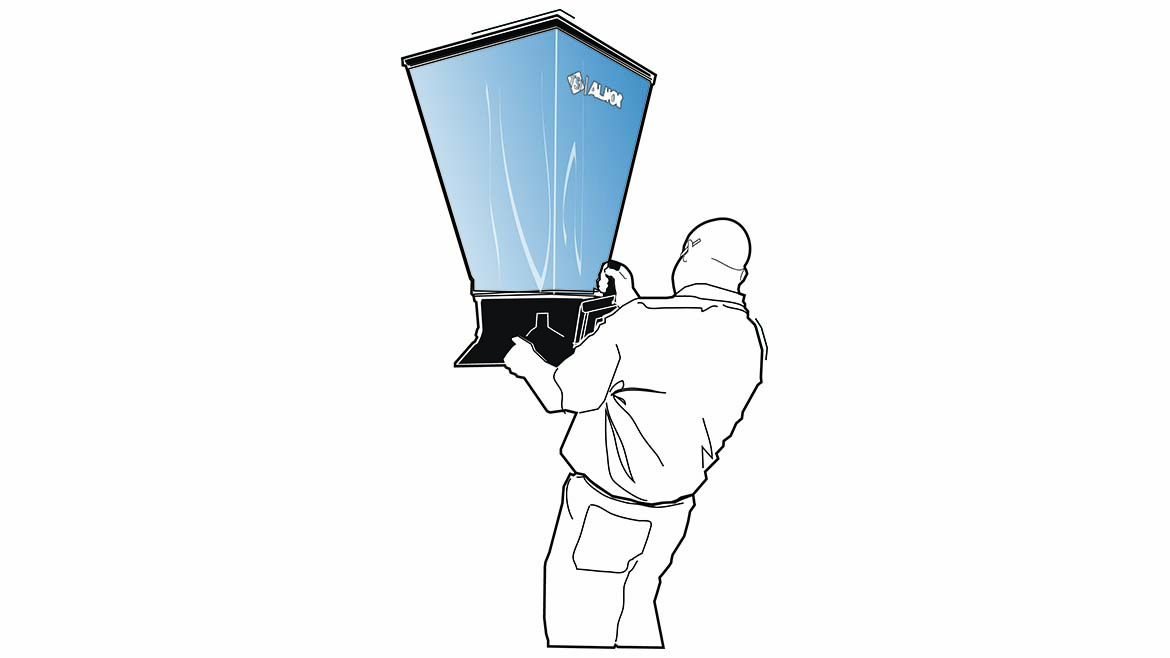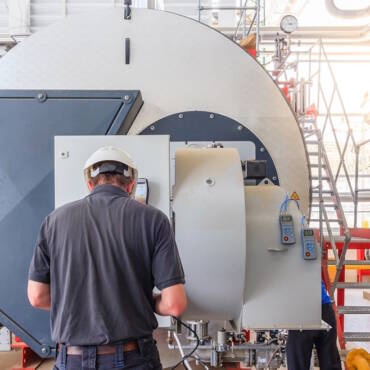Uncomfortable rooms are among the top comfort problems your customers face. While some rooms are too hot, others are freezing. In some homes, the lack of comfort extends to entire floors. It’s sad that many homeowners have given up and tried to live with this pain. Need proof? Just look for homes with randomly scattered window units.
Thankfully, many homeowners aren’t willing to give up. They want answers to their comfort problems and refuse to settle for a window unit. These homeowners want something more, but don’t know where to look or who to trust. Many contractors will try to convince them that new equipment alone can cure their pain. It won’t.
Resolving these comfort problems requires looking beyond the equipment to what it’s attached to — the duct system. That’s because the most common duct system problem contributing to uncomfortable rooms is improper airflow. To discover it, you can apply air balance testing principles that have been around the HVAC industry for more than 50 years. Let’s look at how using these principles differentiates you from competitors and helps you fix customers’ uncomfortable rooms.
Essential Air Balancing Gear
If you want to use air balancing principles, you need the necessary gear. A cheap anemometer or the palm of your hand won’t cut it. This single factor often stops many companies from starting this type of work. They don’t see the value of the test instrument investment, or don’t have the funds. I was in the second group.
When our family company was first introduced to using air balancing to solve comfort problems, we didn’t have the money for the test instruments. I was ready to take out a loan because I knew deep down that air balancing would help our company. Thankfully, a family member helped us out. We bought our first set of test instruments, which quickly paid for themselves. The three test instruments we began with were:
- A manometer for static pressure testing
- An air capture hood to measure supply register and return grille airflow
- An anemometer (rotating and hot-wire) for when you can’t use an air capture hood.
We applied air balancing principles to residential HVAC systems as soon as these specialized test instruments arrived. It surprised us how quickly they paid for themselves and continued to benefit us for years to come. But be sure to do your research before buying. There are a lot of other tools you can buy, but they may not all be necessary. If you have a limited budget like we did, you’ll need to invest wisely.
Air Balancing an HVAC System From 30,000 Feet
Once you have the test instruments, don’t just walk through a system randomly testing and adjusting dampers. There is a process to air balancing and using it to troubleshoot bad ducts. A high-level view of essential air balancing steps includes:
- Gather design information, such as equipment specifications and design values
- Inspect the equipment and duct system
- Turn the HVAC system on
- Take initial static pressure and airflow readings
- Compare measured airflow to design airflow to identify dampers that need adjusting
- Adjust balancing dampers to meet design airflow tolerances
- Perform final testing to ensure measurements and specifications are in acceptable ranges.
Various authors have written entire courses and books on the steps above. I’ve included them to give you an idea of what’s involved in the balancing process. Once you know what it takes to complete a proper air balance, you can see how the steps apply to diagnosing a duct system and comfort problems.
Give yourself time to learn and don’t be in a rush. Start on your own systems so there’s no pressure and you can focus on learning. What I learned while practicing was both priceless and painful. My biggest revelation was that I didn’t do much air balancing on our systems and it wasn’t because they were great. I expected other contractors’ systems to be a mess and need work, but not ours. I was wrong. We had work to do first.
Get the Ducts Right
Most duct systems need repair before you can balance them. We learned some hard lessons about duct design not always equaling reality. Our airflow measurements revealed improvements that were needed before we could balance our installations. There’s a possibility yours could, too.
We created a scope of work from our measurements to repair any issues. Some systems needed minor changes, like fan speed adjustments, but others required more work. The three biggest issues we found were duct leakage, undersized return ducts, and poor fitting choices, like transitions and elbows.
An air-balanced system requires you to install ducts differently. We changed things we never thought we would, like installing balancing dampers in return ducts and abandoning wall cavity returns. A duct system must be as close to leak-free as possible so air flows to the registers and grilles. Ducts can’t lose air through leaks in the connections, even if those ducts are in a conditioned space, like a basement.
You must size a duct system for properly sized equipment. So, there’s a good chance your duct sizes will change, especially if you use the duct calculator setting of .10 as your design friction rate. We started using low total equivalent length (TEL) duct fittings and avoided sharp turns like the plague. You’ll also need to install balancing dampers in each branch duct. It’s impossible to air-balance a duct system with no dampers.
WARNING! Airflow DOES NOT Equal Comfort
While air balancing focuses on airflow, it’s only one ingredient needed to achieve comfort. If you only focus on the air, you’ll overlook other causes of comfort problems. An HVAC system also needs the proper supply register temperature to maintain comfortable conditions. Without it, you still have a problem. The two most common causes affecting supply register temperature are duct losses and layout issues.
Duct losses occur because of duct leakage and inadequate insulation. Our industry has a bad habit of putting ducts in spaces they shouldn’t be in. When you’re trying to move 55°F air through ducts surrounded by 135°F attic air, supply register temperatures suffer. If those ducts leak and pull air in from the same space, it adds excessive load to the HVAC system and leads to additional comfort problems.
Duct layout challenges include how the original contractor installed the duct system or building obstructions. In many homes, rooms just have supply registers and pull return air from a central location, like a hallway filter grille. One unintended consequence of this installation is interior doors now acting like dampers. When closed, they cut off airflow back to the central return and create intermittent comfort issues.
Sometimes the problems extend beyond the HVAC system and require a look at the home itself. There may be air leakage and insulation issues affecting the HVAC system’s ability to maintain comfortable conditions. Other times, a house simply beats you, and the only choice you have is to do the best you can.
Finding Balance
Adding air balance testing principles to an HVAC company isn’t easy. You must believe in the potential of air balancing and what it can do for your company or it’s likely you’ll quit once the first obstacle appears. There were times we considered quitting. I’m glad we didn’t.
Measuring airflow teaches you a lot about your installations and yourself. There are no limitations to these applications except those you create. We used to use air balancing for quality control, sales, and differentiating our company. You can too. It takes time, work, and commitment to develop air-balancing skills, but I promise, it’s worth the effort.
Whether you require installation, repair, or maintenance, our technicians will assist you with top-quality service at any time of the day or night. Take comfort in knowing your indoor air quality is the best it can be with MOE heating & cooling services Ontario's solution for heating, air conditioning, and ventilation that’s cooler than the rest.
Contact us to schedule a visit. Our qualified team of technicians, are always ready to help you and guide you for heating and cooling issues. Weather you want to replace an old furnace or install a brand new air conditioner, we are here to help you. Our main office is at Kitchener but we can service most of Ontario's cities
Source link




Add Comment